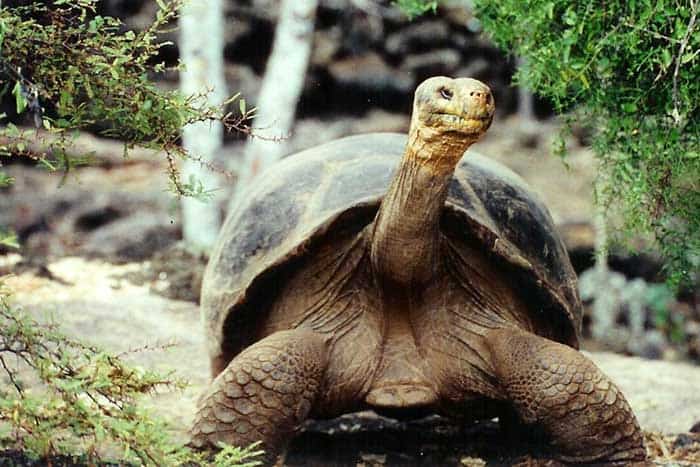
Scientific Name
- The scientific name of Aldabra Giant Tortoise is Geochelone gigantea.
- It is also known as Aldabrachelys elephantina or Dipsochelys elephantina.
Description
- The Aldabra or Galapagos Tortoise is the 2 largest tortoise in the entire world.
- They are dark grey to black in color with a highly domed thick carapace.
- Aldabra tortoises also have a very long neck to aid in food gathering.
- CITES listing: Class II (01/07/1975).
Distribution
- Aldabra Giant Tortoises are found mostly in Aldabra atoll (a small group of coral islands in the Indian Ocean).
- Also, in Seychelles Island, some in Madagascar, Mauritius, Reunion & Tanzania.
- Galapagos Tortoises are found in Galapagos Islands in Ecuador.
Breeding
- Breeding season occurs from January to April.
- In courting, the male batters his shell against a female a dozen or more times, and he makes a deep, trumpeting call when mating.
- After carrying the fertilized ova for about ten weeks, the female digs a hole in the ground and lay eggs.
Nesting
- Every time, the female lays between 9-25 eggs, of which less than half are fertile.
- The Aldabra Tortoise eggs incubation period ranges from 73 to 160 days, with the young emerging during an eight-week period coinciding with the beginning of the wet season.
Size
- Aldabra adults can grow up to approximately 48 inches (1.2 meters) in length, 550 lbs (250 kgs) for males.
- Female tortoises are approx. 36 inches (0.9 meters) in length, 350 lbs (160 kgs).
Life Span
- They can live more than 80 years.
- The oldest recorded age is 255 years old tortoise.
Diet
- Herbivorous (plant-eating); Vegetables.
- Occasionally small invertebrates and carrion.
- Their main foods are Grasses, Dark Leafy Greens (e.g. dandelions, mustards, collards, turnips, kales).
- Occasionally foods to be Pears, Carrots, Peaches, Apples (with skin), Beans (with skin), Peas (with skin), Almonds, tomato,
- In captivity, sometimes, they are fed with high-quality canned reptiles, dog or cat food, etc.
Habitat
- Terrestrial; the semi-arid islands have coral limestone beaches and mangroves along their borders.
Tortoise Cage and Housing
- The cage should be large enough.
- Adults Aldabra are recommended to be housed outdoors most time of the year.
- With Soil, fine sand, or compressed paper granules as substrate, 12 – 14 hours each day with direct natural sunlight or UV lamp, low to mid humidity.
- The best temperature range for them is 25 – 35°C.
- A big water dish to be left in the cage sometimes but not all the time.
- If possibilities include caves as hiding places.
